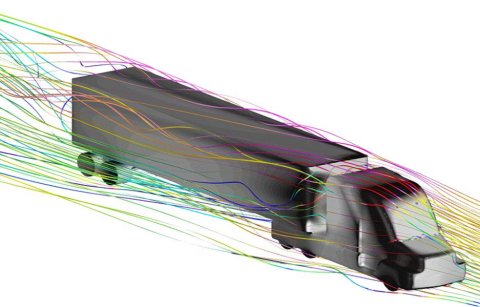Vehicle Aerodynamics
Background
Tougher emissions standards, as well as industry demands for more powerful engines and new vehicle equipment, continue to increase the heat rejection requirements of heavy-duty vehicles. However, changes in the physical configuration and weight of these vehicles can affect how they handle wind resistance and energy loss due to aerodynamic drag.
Role of High-Performance Computing
The field of computational fluid dynamics (CFD) offers researchers the ability to visualize and predict how changes in design affect a heavy-duty vehicle’s aerodynamic performance on the road. Incorporating advanced simulation capability in the heavy-duty vehicle design process can help improve fuel economy. Argonne scientists and engineers use a variety of commercial CFD tools to develop guidelines for the use of CFD analysis in evaluating tractor-trailer designs. The simulations have been compared with detailed pressure, velocity, and body force data from wind tunnel experiments. Results show that modeling can predict drag coefficients within 1% of the actual values measured, and that surface pressure distributions can be predicted with reasonable accuracy.

Prediction of aerodynamic flow patterns for a heavy-duty vehicle using computational fluid dynamics.
For further information contact: This email address is being protected from spambots. You need JavaScript enabled to view it.